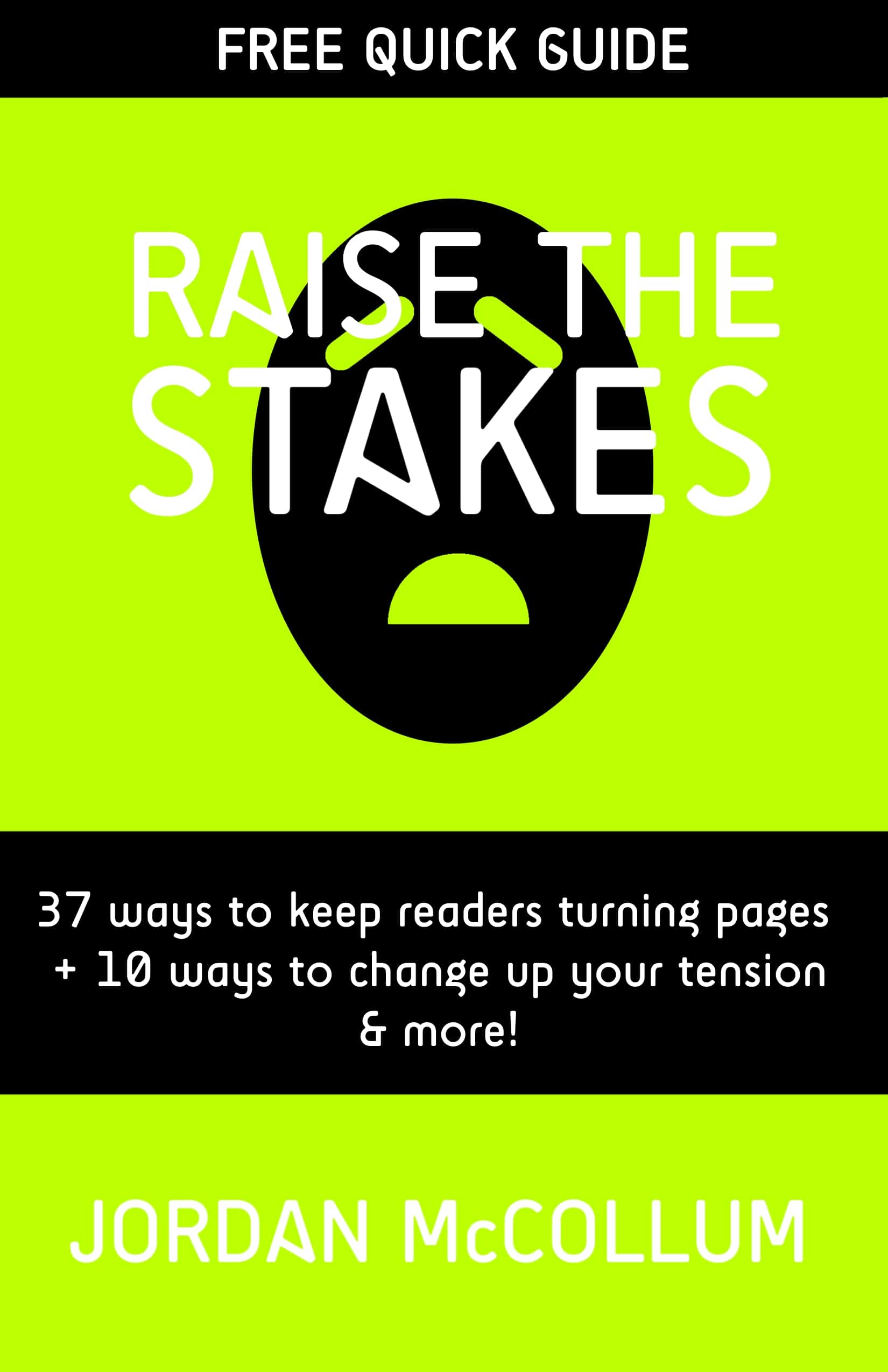More about burying clues in (non)mysteries next week!
Okay, so participial phrases at the beginning of sentences have become one of my pet peeves. I don’t mind them when they’re well done, but unless you’re pretty handy with a clause, you might want to avoid them. This might seem like just one of those silly arbitrary rules that are just made up to help us prove we’ve read up on the latest so-called rules for writing, which will change in another ten years.
But present participial phrases are not just a magical hoop editors want us to jump through to prove that we’re familiar with industry bywords. It’s mainly an issue of grammar (and to a lesser extent, style, but that’s because they’re overused). Complaining about strictures against present participial phrases is almost like complaining about commas. There are correct places and times for using commas, and incorrect ones, and I suspect that most of the time, if we carefully look at a book, we’ll see that most of the commas are used right and perhaps not as often as we thought.
I really came to understand this by reading the posts on present participial phrases at EditTorrent, a blog by two editors. But if you don’t feel like clicking through, I’m happy to summarize the anti-present participial phrase arguments.
First, to clarify, these are not gerunds. Gerunds are typically not a problem. Gerunds are the -ing form (present participle) of the verb used as a noun:
I enjoy writing.
Writing is fun.
For the most part, this isn’t going to be a problem in a sentence, since they’re on the rare side. (I.e. beginning each sentence with a gerund would also be a problem, especially in the midst of too many present participial phrases, but the occasional correct usage of a gerund isn’t going to hurt anybody.)
What we’re talking about here are present participial phrases:
Running to the door, I called out my son’s name.
Writing out the prescription, the doctor didn’t bother looking up.
I think you can probably see how this is already becoming a problem.
Now that we’ve got that straight, on to the primary argument: Present participial phrases are, to put it mildly, evil.
The vast majority of the time in amateur usage, these phrases appear too often, are often misused, create other grammatical problems, don’t reflect how real people think—and I’m just getting started.
A: Present participial phrases are overused, especially by amateur writers.
 Not to say that any of us here are amateurs, but too many present participial phrases are a mark of an amateur. Frankly, more than one per page (YES, per page) jumps out at me. Three on a page don’t just jump; they scream. People who aren’t really aware of this grammatical construct can inadvertently begin almost every other sentence with a present participial phrase. Seriously. I’ve critiqued *good* writers who still almost made my eyes bleed. This happens exceedingly rarely in the published books I read.
Not to say that any of us here are amateurs, but too many present participial phrases are a mark of an amateur. Frankly, more than one per page (YES, per page) jumps out at me. Three on a page don’t just jump; they scream. People who aren’t really aware of this grammatical construct can inadvertently begin almost every other sentence with a present participial phrase. Seriously. I’ve critiqued *good* writers who still almost made my eyes bleed. This happens exceedingly rarely in the published books I read.
Important note: this standard seems to be very different for UK & Canadian publishers. Whatevs. TMMV.
B: Present participial phrases are frequently misused.
The grammatical construct of a present participial phrase at the beginning of the sentence ALWAYS means that the action in that phrase and the action in the main part of the sentence are simultaneous. Always. (There’s sometimes a bit more leeway when the present participial phrase appears after the main part of the sentence, though technically speaking there shouldn’t be.)
So, these would be not only grammatically incorrect, but physically impossible:
Chomping down on her food, she stuck her tongue out. (Ouch.)
Sneezing, he sang an aria.
However, there are lots of things you can do simultaneously:
Smiling, she walked down the aisle.
An important note here is that reading is a very linear activity—we read one word and then the next—and these phrases can make it easy to misunderstand or just slow us down as we try to figure out the order of the actions and picture them. This is so important it could warrant its own letter, but I don’t think I really need to explain this more.
C: Present participial phrases frequently cause misplaced modifiers.
The action or state described in a present participial phrase must ALWAYS describe/be done by the subject of the sentence. If not, you get a misplaced/dangling modifier:
Running to the car, the cat darted between his ankles.
The only grammatically correct way to understand this sentence is that the CAT was running to the car. At best, this sentence is ambiguous—we really can’t assume that it means the man was running. If I want to say the man was running to the car and the cat darted between his ankles, I’d be much safer to say THAT.
Walking down the street, a bat bit the man on the thumb.
Grammatically speaking, this sentence says a bat was walking down the street and bit a man on the thumb. Paraphrased from a famously bad police report.
D: If we’re supposed to be writing in our character’s thoughts and minds, present participial phrases would appear sparingly at best.
People rarely think that way. Really, think about how you think. Okay, generally we think in pictures, but when you do use words, is that how your thoughts go? If we’re seeking to replicate our characters’ voices and internal thoughts, then, would they use them?
Varying sentence structure isn’t a good enough reason for these either. As editor/author Alicia Rasley points out, varying sentences isn’t an end to itself: it’s an intermediate goal to create a smooth read.
Since these constructions do stick out if used incorrectly or awkwardly or too frequently, and so many first drafts contain so many present participial phrases that you can’t construe their usage as actually varying the default sentence structure anyway. Again, important enough to get its own letter, but I don’t want to beat you over the head with this.
To conclude:
Okay, maybe present participial phrases aren’t exactly evil, but just like commas, but we have to be VERY careful about how we use them (or we’ll end up with something ungrammatical or bizarre) and very judicious about when we use them.
In my opinion (formed by the careful tutelage of the editors I mentioned above), the best use of a participial phrase is for something that describes the state of the subject of the sentence, NOT an action:
Hoping she wasn’t too late, she dashed into the room.
Her emotional state in this sentence is one of hoping.
Yes, sometimes published and unpublished authors use present participial phrases. I invite you to find a book published in your target market or by your target publisher, flip to any page and count the number of sentences that begin with present participial phrases. I was amazed when I did this: books that were decades old or only a few months both yielded very few.
What do you think? How often do you really use present participial phrases? What did you find when you opened a book in your target market?
Photo by Bird Eye


Thank you for this post! I fear my writing has far too many of these….
Love it! Very Helpful. Thanks, Jordan! Have a super vacation!